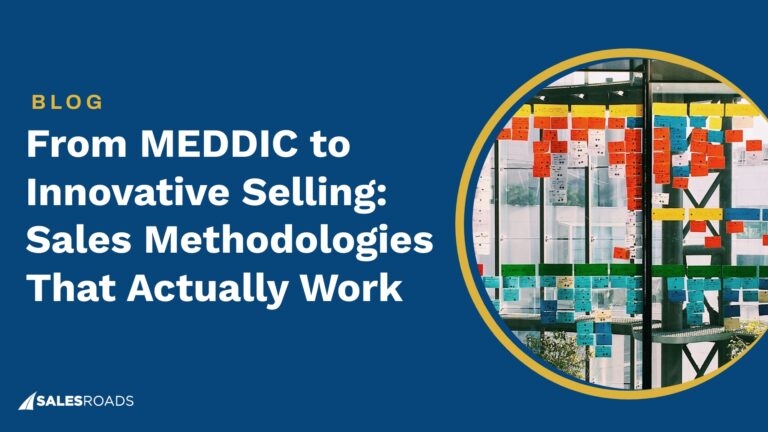Sales development representatives are specialized sales professionals responsible for connecting with potential customers through cold outreach. Well-trained SDRs accelerate the sales process by generating and prospecting qualified leads.
Sales development representatives can work individually or in teams. Their main roles are:
- Engage quality prospects
- Educate prospects about their company’s products or services
- Schedule meetings between prospects and the account executives (AEs)
- Report to sales managers with front-line data on sales leads they generate
Skills to Look for in an SDR
There are a few essential skills to look for when hiring or training an SDR. An efficient sales development representative can combine soft and hard skills to facilitate prospecting and accelerate the sales process.
Hard Skills for SDRs
Hard skills are measurable, job-specific abilities that professionals need to execute their duties. Relevant hard skills for SDRs include:
- Software experience: SDRs must proficiently use tools such as CRM systems, video recordings, email, and social media. Tech Savvy SDRs have an advantage over their counterparts who can’t quickly adapt to new tools and methods.
- Ability to customize outreaches: Using a one-size-fits-all method no longer yields valuable results. A top SDR must be able to run custom-made outreaches tailored to clients’ interests and needs. This personalized approach increases connection rates and converts prospects into customers.
- Research: SDRs perform in-depth research to find quality leads. An SDR’s ability to uncover accurate information about a prospect from reliable sources is essential to its outreach process.
- Time management: Sales development representatives manage prospects in the pipeline, which requires a high degree of organization. The ideal SDR maximizes time management tools like scheduling apps and appointment reminders.
Soft Skills for SDRs
Soft skills are individual attributes that complement technical abilities to improve performance. Sales development representatives perform better with the following soft skills:
- Resilience: Dealing with rejections over the phone is part of the salesperson’s routine. SDRs must learn to be resilient and remain positive after rejections. Resilience takes practice, and the best SDRs have mastered it.
- Active listening: SDRs must identify a product-client fit from conversations with the prospect. Active listening can be developed with practice.
- Empathy: Empathy is the ability to put yourself in another person’s shoes. The best SDRs are sensitive to their prospects’ pain points and offer them products and services as solutions. They use empathy, communication, and active listening to guide leads and accelerate sales.
- Communication: SDRs must communicate clearly and effectively. Top SDRs are excellent communicators.
- Confidence: Well-trained SDRs are confident in their abilities to deliver the job. They are assertive and self-assured in their sales prospecting abilities. Prospects are more likely to accept an appointment when interacting with a confident SDR.
- Self-awareness: Top SDRs have assessed their strengths and weaknesses to offer the best experience for prospects. Self-awareness helps SDRs develop unique strategies to overcome challenges and identify areas for growth.
- Coachability: SDRs consistently receive feedback from their manager, and their ability to implement that feedback enriches the sales process. Top SDRs are always ready to improve and willing to be coached.
- Relationship-building: SDRs prepare prospects for a call/demo with the AEs and build trust with potential clients. Relationship building involves a constant, clear communication of value that keeps the prospects engaged and motivates them to complete purchases.
- Critical thinking: Sales development representatives utilize a lot of information for prospecting. Critical thinking informs what information is suitable for who, and how to present it to them. A savvy SDR analyzes this information and provides quick, accurate solutions relevant to each prospect.
Components of Effective SDR Training Programs
You can train superstar SDRs with an intensive, goal-oriented program. Combining training and technology will form sales development representatives that fuel revenue for your company.
An ideal SDR training program has four components:
1. Example SDR Onboarding Timeline
Create a schedule to onboard the SDRs according to your company’s processes. It should take around two weeks, during which you’ll train your SDRs in the following areas:
| Week | Training Area | What to Cover |
| 1 | Company products | Product differentials |
| 1 | Sales process | CRM, time management & automation tools |
| 1 | Prospects | Core customer persona |
| 2 | Competition | Market landscape and selling points |
| 2 | Role-play | Live phone skills |
SDRs training is a hands-on process in which sales managers must be fully involved. Their presence reassures SDRs and makes it possible to evaluate the onboarding process first-hand.
2. A Library of SDR Training Resources
Creating a readily accessible library of reference materials is a critical component of SDR training. You can use cloud-based technology to store these resources to ease your onboarding process. Building the library takes time, but consistency promotes a learning culture with your SDRs and ramps up their results.
Recommended resources for your SDR training library are:
| Training Resources | Content |
|---|---|
| Sales playbook | Value props, persona statements |
| Sales articles | Blogs and tips on cold calling, email & tools |
| Scripts | Scripts for calls and emails |
| Training slides | Onboarding, meetings, and presentations |
| Competitor overview | Analysis of competition and industry trends |
| Books and Videos | Behavioral psychology, sales tactics, and management. |
3. Continuous Coaching
Training SDRs should not end with the onboarding process: sales managers must commit to the continuous development of their teams. You can achieve this through individual coaching sessions and team meetings.
Many sales managers focus on improving soft skills such as time management and objection handling as they are high-impact areas for SDR coaching.
4. SDR Evaluation
You can’t measure progress without evaluation. Regular review of key performance indicators is essential to measuring SDRs growth. It should be the central focus for sales managers.
A typical SDR performance review should follow this format:
- Key Performance Indicators (KPIs) – metrics that describe performance in a period under review
- Achievements
- Challenges faced
- Strengths and weaknesses
- Improvement strategy
5. Iteration and Improvement
Combining the essential elements of an SDR training program leads to sustained improvement in SDR performance over time. It’s important to understand sales skill development is an iterative process where the sales coach and SDR work in tandem to overcome obstacles.
In the video below, SalesRoads’ President, David Kreiger, discusses how sales coaches can kickstart the iterative coaching process by conducting in-depth debriefs as soon as SDRs begin their outreach.
Sales Development Representative Certification
There are industry-certified courses to enhance an SDR’s effectiveness. These courses contain resources that prime SDRs for massive career boosts. Sales development certifications position SDRs for better results without requiring experience in sales.
The certification training provides an opportunity to learn from the industry’s finest SDRs and sales executives. They also give insights into the SDR role, a purview of the industry, and tips for success on the job.
Sales leaders can recommend these certifications to SDRs to improve their skills:
| SDR Course | Resources | Certificate | Renewal |
| Certified Sales Professional (CSPⓇ) | Paid | Yes | Every 3 years |
| Salesforce Professional Sales development representative Certificate | Free | Yes | Not required |
| Hubspot Inbound Sales Certification | Free | Yes | Not required |
Bottom Line
Well-trained SDRs are essential for moving prospects through the sales pipeline. Sales managers can build strong SDR teams by creating training programs incorporating skills, technical abilities, and regular evaluations.










